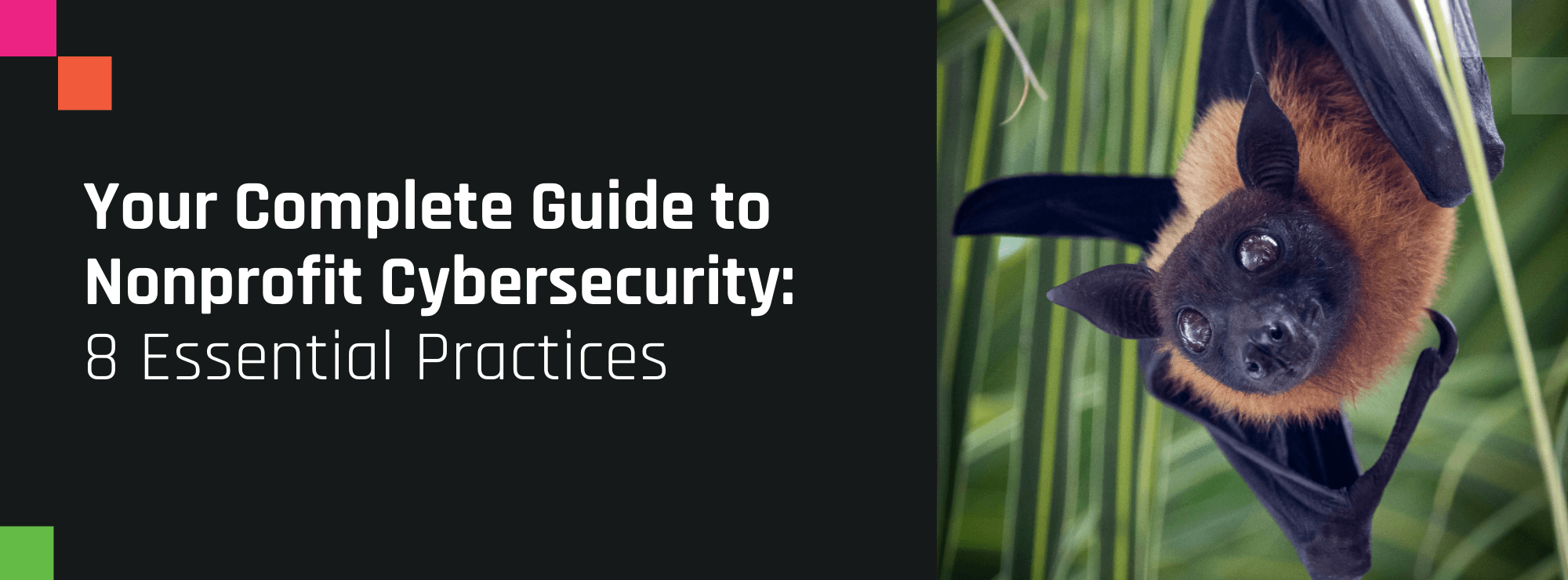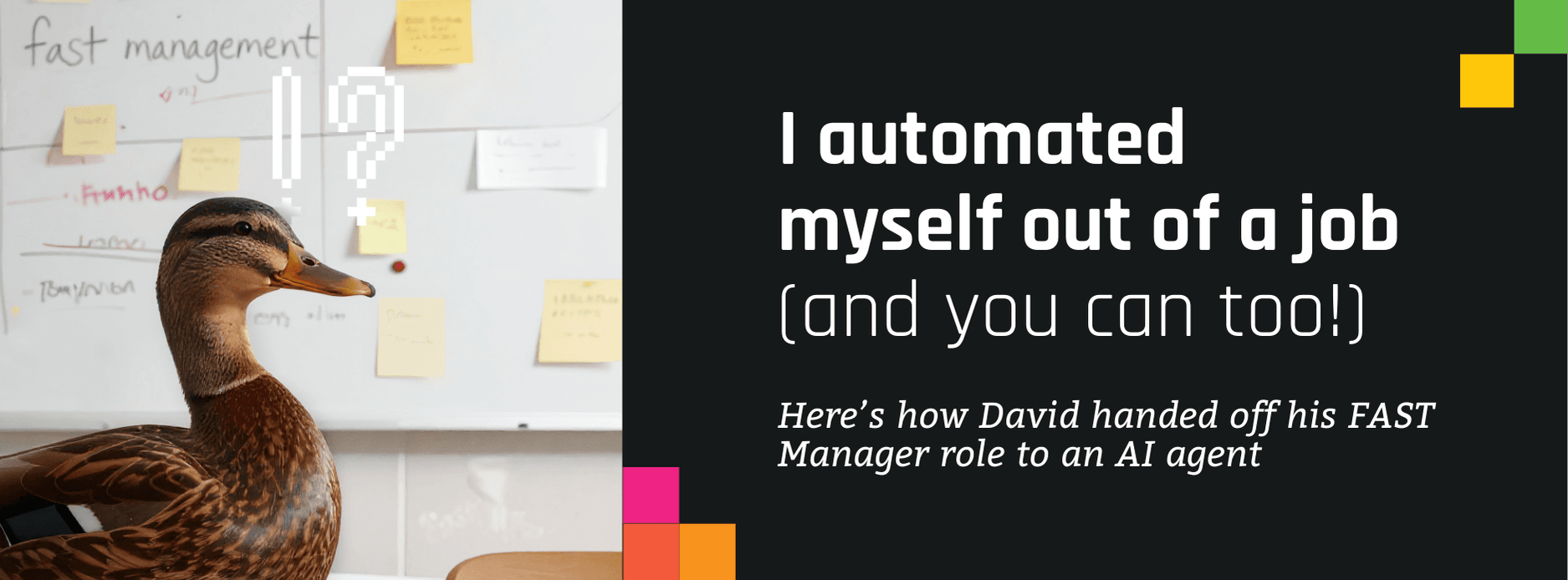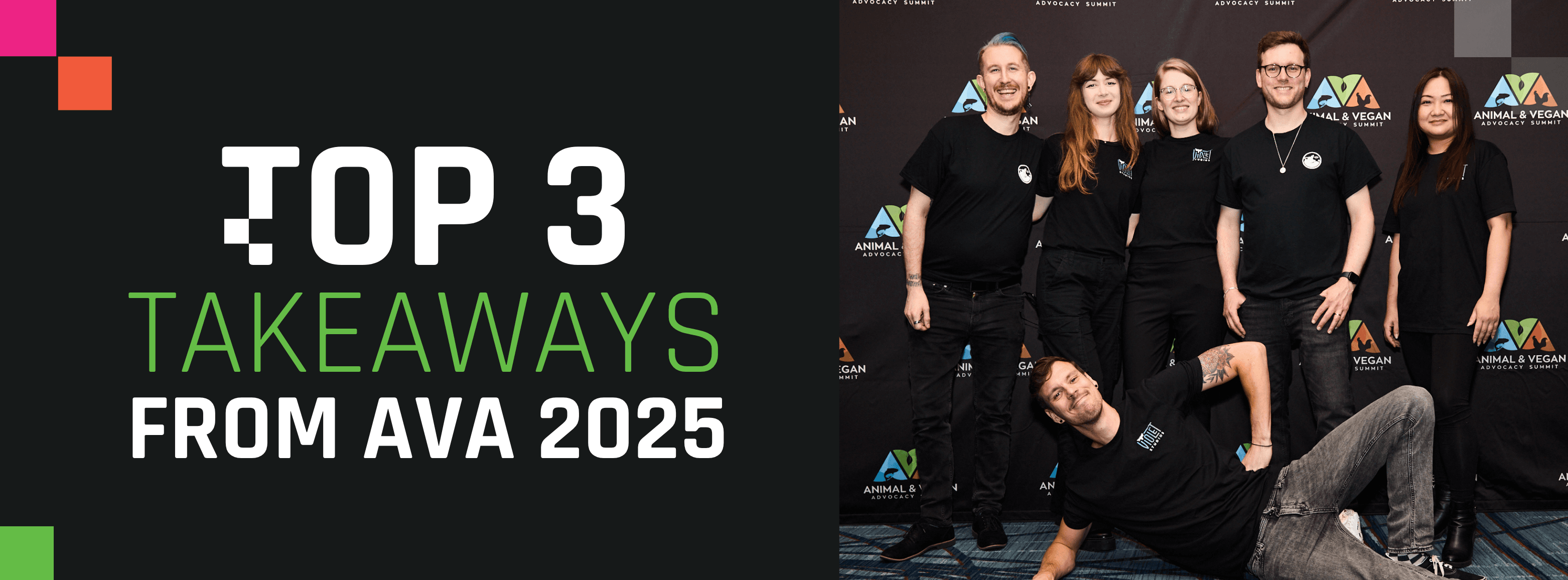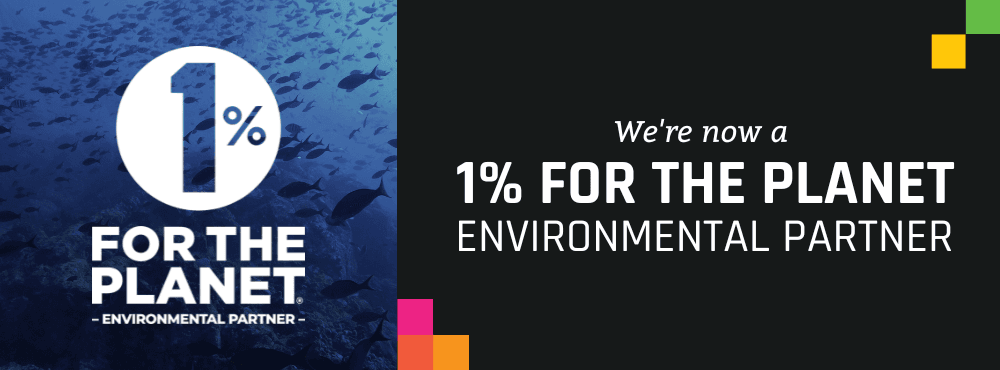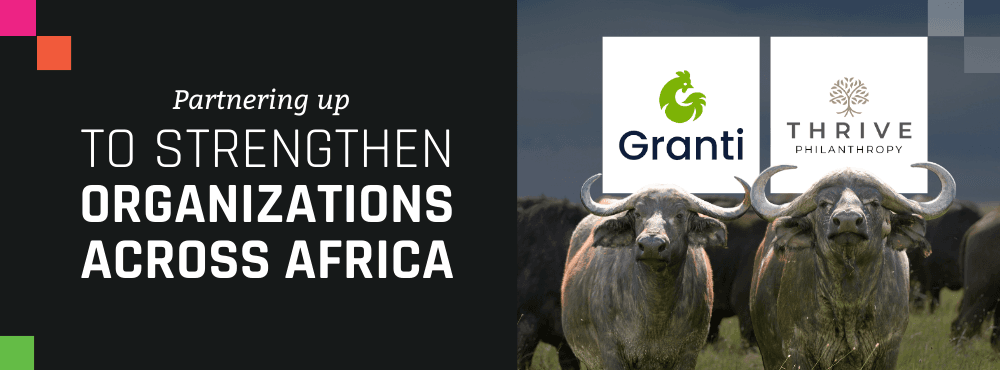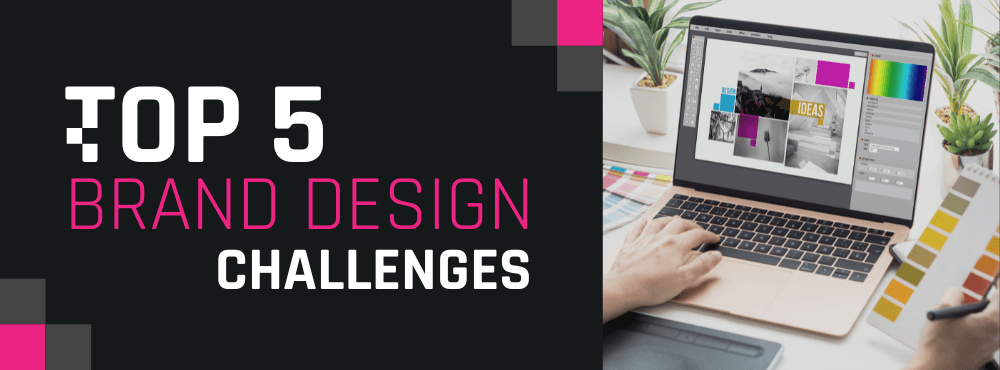
Top 5 Brand Design Challenges in Animal Advocacy
Creating a powerful visual brand can have a profound impact on your work. A consistent, high-quality brand can foster trust, expand your reach, enhance your reputation, and establish you as a leader in the animal protection community. These elements come together to create opportunities for growth, strengthen your connections, and even change people's attitudes. In fact, Vegan Hacktivists has experienced firsthand the transformative impact of a strong rebrand, opening doors and forging connections throughout our community.
However, a poorly executed or inconsistent brand can have the opposite effect, eroding trust and damaging your reputation, often without people even realizing it. It's essential to ensure that your brand accurately reflects your organization and goals, so how do you ensure that you are creating and using a brand that will take you where you want to go? Let's work together to identify and dispel challenges that limit access to high-quality design, making these benefits accessible to everyone in the movement, even on a limited (or nonexistent) budget.
Challenge #1: “I don’t have an eye for design”
With the right tools and resources, anyone can develop an understanding of design basics.
Visual design is a “language” that speaks volumes, and you can learn to speak it too. While professional designers go to school to master it, you don't need a degree to grasp the basics. Empower yourself with design knowledge and develop your eye to create materials that are thoughtful, captivating, and consistent!
Luckily, there are plenty of free and affordable resources available to learn design fundamentals. I’ve linked to several videos below, but really, there are endless of options online.
![[Blog] Typography](/_next/image?url=https%3A%2F%2Fimages.ctfassets.net%2Fa0em3uo7cuue%2F3VPTEiPU5S5GJ3jfJjUixP%2F9cf82b00e799575c8393bbaeb3f9d6e7%2Fimage7.jpg&w=3840&q=75)
I’d recommend beginning with a basic understanding of the following:
Typography (Hierarchy and Font Selection):
Typography takes the top spot on this list for good reason. When typography is bad, it can detract from your overall message. However, when done well, typography is a powerful tool that can aid in comprehension, retention, and draw in viewers to read your content.
To ensure your typography is effective, a basic understanding of hierarchy is key. Knowing which information is most important and how to guide the reader's eye is essential. “Less is more” when it comes to text, as including too much content in your images can cause people to tune out.
The world of fonts is enormous and can be intimidating. Don’t fret – don’t overcomplicate. “Less is more” can also be applied to font selection: limit yourself to a maximum of three fonts for your brand. To simplify, two will suffice: an easy-to-read, accessible “body copy” font, and a stronger, “display” font for headings or bold typography. To simplify further, you can easily take inspiration from recommended font pairing lists if you are finding this to be a struggle.
Color Theory:
Color plays a crucial role in shaping the way people perceive and interact with design. Color can convey meaning and communicate messages in powerful ways.
For example, different colors can be associated with different emotions or meanings. Red may be associated with passion or danger, while blue may be associated with calmness or trustworthiness. By understanding these associations, you can use color strategically.
Properly harmonizing colors and using good contrast can create a visually pleasing and engaging design. On the other hand, poor color choices can create confusion or even make a design difficult to read.
Composition & Balance:
By understanding composition and balance, you can create designs that guide the viewer's eye through the piece. Poor composition or imbalance can cause confusion or disinterest, resulting in a less effective design.
Balance is also essential in design because it creates a sense of harmony and stability. Imbalanced designs can create tension or discomfort in the viewer, while a balanced design will feel more comfortable and easy to engage with.
![[Blog] VL branding](/_next/image?url=https%3A%2F%2Fimages.ctfassets.net%2Fa0em3uo7cuue%2F4aqt6xJ4IkXNvP8uYRelDu%2F82925b81817153dbc20d997805bb326d%2Fimage4.jpg&w=3840&q=75)
Challenge #2: “My organization doesn't have a strong sense of brand and identity.”
You can follow a brand assessment to establish an authentic look and feel.
Your brand serves as a representation of your organization, including its values, mission, people, personality, and expertise. Your brand is an extension of your group, representing you when you’re not in the room (which, in our digital world, could be the majority of interactions people have with your organization). However, creating a brand that accurately represents your organization can be challenging.
First impressions matter – most people form an opinion almost immediately when faced with a design, and that can have an impact on your organization.
“It takes about 50 milliseconds (that’s 0.05 seconds) for users to form an opinion about your website that determines whether they like your site or not, whether they’ll stay or leave.” (Source)
Are you making an accurate impression? It’s certainly a challenge! Don’t be afraid to ask for a designer’s help with assessing your brand – but if you’re looking to hone your own skills, try this method:
Step 1: Define your brand personality by listing at least five words that best represent your organization. Things like: Approachable, bold, collaborative, inclusive, powerful, natural, ground-breaking… whatever comes to mind.
Step 2: Conduct a mini brand assessment by collecting all of your visual materials into one central location for review. I like to use Miro (free) for this, as it is an excellent digital collaboration tool that you can invite others to. But whatever method is easiest for you is fine – as long as you can see everything together for a full picture, side-by-side comparison.
Step 3: Evaluate your visuals and see how it stacks up against those personality benchmarks. Ask questions like: Is this approachable? Is this bold? Potentially invite those from your community and gain their feedback as well. Do you notice anything that’s not matching up?
Step 4: If you’ve found areas for improvement, try to push your designs more in that direction. Use what you’ve learned from the free resources above to think about how you might change your brand’s perception. For example: If you need more boldness, consider more bold colors. Or if you want to be more approachable, consider elements that are less cold and more inviting such as softer/warmer hues and less sharp edges (shapes and typography). The possibilities are endless. Play with it!
Challenge #3: “When and where should I use my logo and new branding?”
Maintain consistency with brand guides and templates, which promotes audience engagement and trust.
While we may have unique goals within the animal protection movement, many of us share the common objective of advocating for animal protection and inspiring change. Trust, especially related to perceived credibility, is paramount. Quality design is just as important as quality content when it comes to creating trust – especially when it comes to your digital presence in our increasingly online world.
Inconsistencies, surprises, and low-quality visuals can damage trust subconsciously – even if it’s something as simple as using a different font than expected.
“94% of comments regarding mistrust of websites were aimed at design rather than overall content… Design appeal predicted rejection (mistrust) and credibility of information and personalization of content predicted selection (trust) of sites” (Source)
How do you ensure that your brand is showing up consistently?
Step 1: Create a solid brand guide. If you don’t have the skills or desire to create your own, work with a designer who can set you up for success. Once you have this guide to work from, make sure you stick to it. A great brand guide is rigid enough to ensure consistency, yet flexible and diverse enough to ensure that you have all the design tools you need for any situation that may arise.
Step 2: Create bulletproof templates. For social media, presentations, documents, and more, create some “base” templates to start all new designs with. Create as many templates as you need so that no one feels like they’re starting “from scratch” when a new design opportunity comes up.
Step 3: Train your team to use these templates and the guide. Whether you’re working with a small or large team, with employees or volunteers, ensure that anyone creating designs feels confident in representing the brand. The brand guide and templates will empower them to create their own designs that don’t deviate too far. Ultimately, brand consistency will come down to who is working with the brand every day, not the original designer.
![[Blog] VH rebrand](/_next/image?url=https%3A%2F%2Fimages.ctfassets.net%2Fa0em3uo7cuue%2F353UdvaZwcfIyM9jhuUs2h%2Fea183b21fe9a3f0ca1cfe49f009b5690%2Fimage3.jpg&w=3840&q=75)
Challenge #4: “Is branding really all that important?”
Yes! A strong logo and cohesive branding can effectively unify people.
People unite under brands all the time. We have emotional responses to our favorite symbols – whether that’s a sports team logo, a clothing brand, a country’s flag, a family crest, or something else personal to you. Throughout history, we have been using branding as a means of unification, and it's ingrained in our psychology. Nowadays, it’s easy to write off “branding” as something only for-profit companies do to sell you things – but a strong brand can be a powerful tool for groups and movements, not just companies looking to sell products.
A great brand image is something that can be instantly recognized and worn as a badge of honor. It can help you recruit talented people, appeal to your audience, and expand your reach. Ask yourself, does your team feel excited and proud to wear your logo at events? Is it easily recognizable among the crowd? Does it appeal to the type of talented people you want to recruit?
![[Blog] ADP rebrand](/_next/image?url=https%3A%2F%2Fimages.ctfassets.net%2Fa0em3uo7cuue%2FekYQyAycZNkYYuBZT8fRk%2F0c9c2fc27ef3c5a12ab7fe9a2ef949f1%2Fimage6.jpg&w=3840&q=75)
Challenge #5: “Professional design services are too expensive!”
There are accessible and affordable services to help you get started.
For those in our movement who lack funding for professional design services, obtaining free or low-cost designs can be a challenge. However, there are some tips to help you access these resources.
When it comes to logos, it's important to avoid unethical logo competition websites that often produce copied designs from the internet. These sites cannot guarantee the originality of the work, which could result in legal issues down the line. Instead, try to find a designer to work with to create something custom for you. Independent freelance designers can create a custom logo for much lower cost compared to a design agency. The price is often highly variable from designer to designer, based on experience. This is a real “you get what you pay for” situation.
If you are working in the animal protection movement and don’t have a budget for logo design, submit a request to our Playground where volunteer designers are available to help you.
Vegan Hacktivists also provides design services for select nonprofits and activists working for a better world for animals. We’re happy to consult on any of the following available design services:
Logos, brand assessments, rebranding
Websites
Document design (strategic plans, donor documents, annual reports)
Social media template
Infographics
Motion design
Once you've established a strong foundation for your brand and received guidance from a professional designer, you can continue to build and promote your brand using affordable or free design software. Canva is an excellent free tool for social media design. YouTube has tons of free design tutorials to help you improve your skills, and Skillshare offers higher-quality design courses for a subscription fee. Developing your own design skills is crucial in ensuring your brand's success, as you'll be working with it regularly.
![[Blog] Vegan Consulting Japan](/_next/image?url=https%3A%2F%2Fimages.ctfassets.net%2Fa0em3uo7cuue%2F7Laz0n4XuS9w7q0cJVDIjk%2F38d4e651a776c1f0a2ac63e14fa22657%2Fimage5.jpg&w=3840&q=75)
If you have any topics that you'd like for us to explore in this blog series, we want to hear from you! Get in touch and we'll tap the minds of field experts, share what we learn, and help build a stronger and more resilient animal protection movement.

Kate Rodman is Director of Design at Vegan Hacktivists, where she has helped organizations with rebrands, contributed to the UI/UX and graphic design of flagship projects, and led a complete refresh of the organization’s brand itself. Since joining in May 2021, she has been at the heart of transforming the way VH looks at design.

Kate Rodman is Director of Design at Vegan Hacktivists, where she has helped organizations with rebrands, contributed to the UI/UX and graphic design of flagship projects, and led a complete refresh of the organization’s brand itself. Since joining in May 2021, she has been at the heart of transforming the way VH looks at design.
